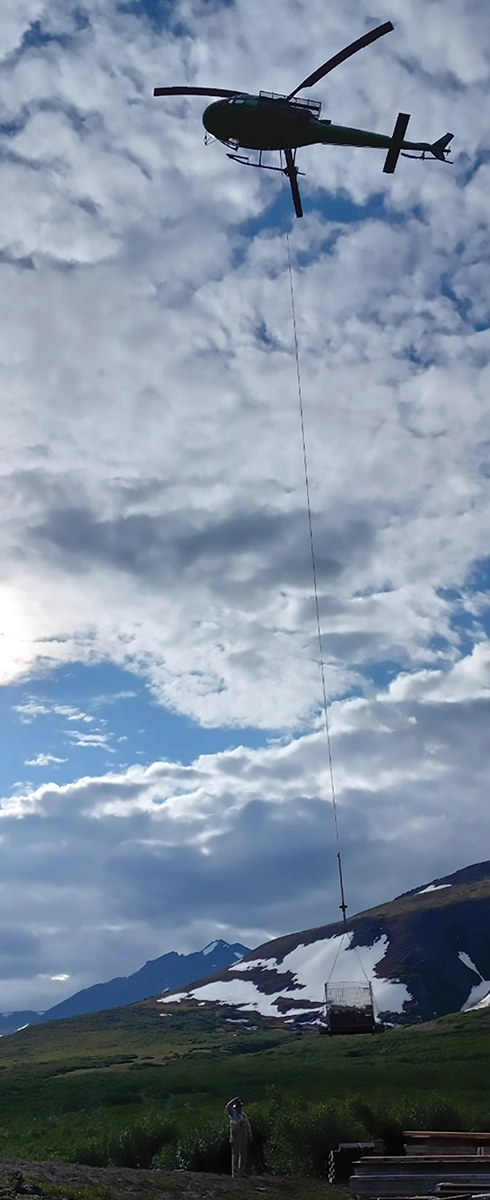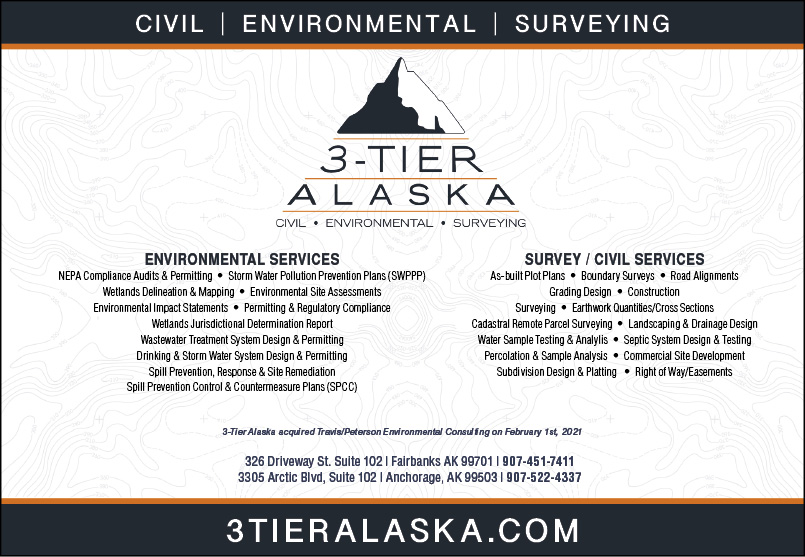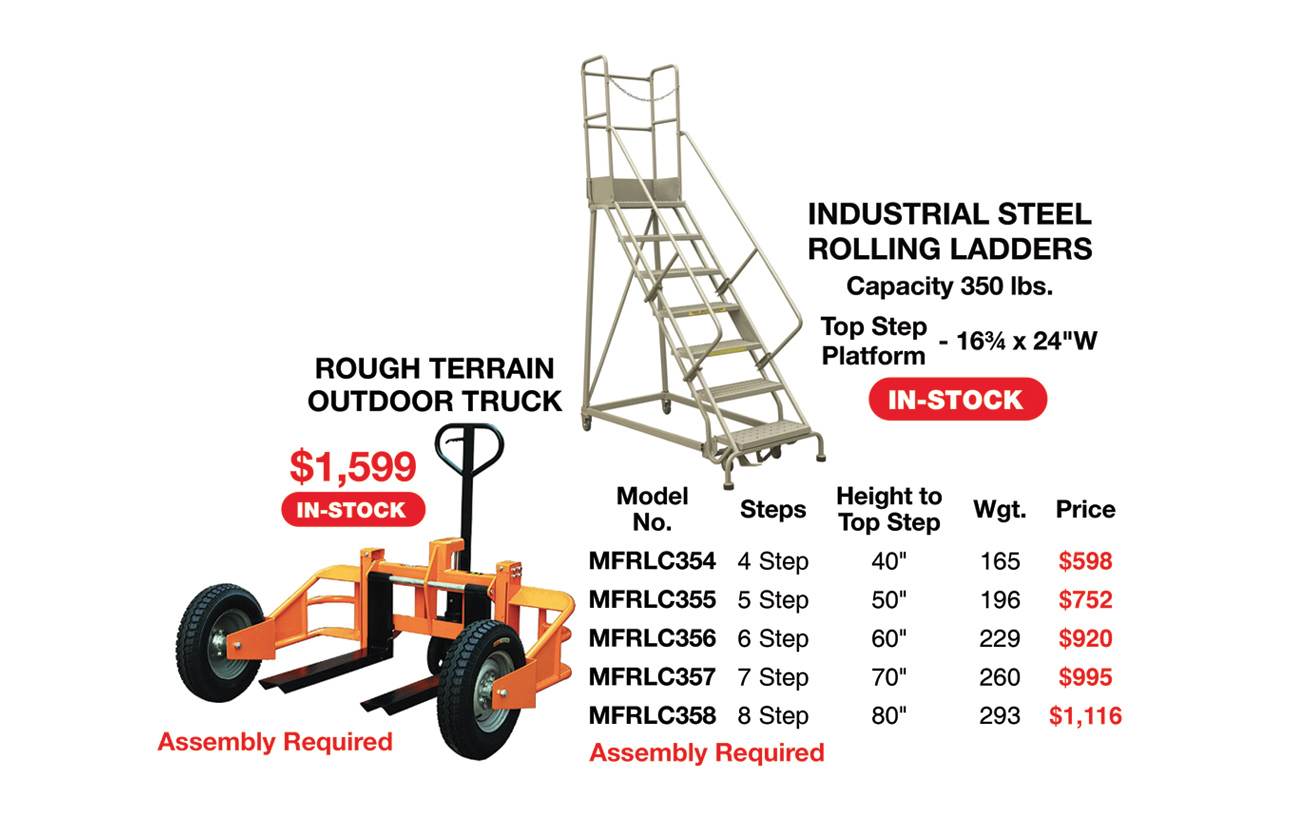In Alaska – The best sales and product support lineup.
In Your Corner – The Winning Team.
Surface Rigs – Underground Rigs – Drill bits – Steel

Fairbanks
Mining Sales

Juneau
Mining Sales
Contents
Features
Second Chance at Success
Alaskans with criminal records in the workforce
$25 Million for 25 Years
Anniversary expansion at Alaska Native Heritage Center
Three Steps for a Better Business
Long-lasting growth and change
Calling All Apprentices
Developing a skilled telecommunications workforce
Second Chance at Success
Alaskans with criminal records in the workforce
Calling All Apprentices
Developing a skilled telecommunications workforce
$25 Million for 25 Years
Anniversary expansion at Alaska Native Heritage Center
Three Steps for a Better Business
Long-lasting growth and change
Quick Reads
Southeast invests in cruise ship infrastructure
Unified alarm about transboundary mining
Chris Miller | Salmon Beyond Borders
CORRECTION: Page 86 of the October 2024 issue lists the name of Great Northwest’s CEO incorrectly. It is A. John Minder.
Unified alarm about transboundary mining
Chris Miller | Salmon Beyond Borders
CORRECTION: Page 86 of the October 2024 issue lists the name of Great Northwest’s CEO incorrectly. It is A. John Minder.
About The Cover
Now that Manh Choh has joined the other six mines in active production, readers can familiarize themselves with the industry with a set of trading cards. In addition to the seven on the roster, more mines are in the developmental leagues, so to speak. One of those projects in the advanced exploration phase is Graphite Creek; in baseball terms, it’s in the Double-A level, preparing to advance to Triple-A before joining the majors.
An example of a Single-A project, then, is Nikolai, a prospect near Paxson. Greg Beischer of Alaska Energy Metals is leading the exploration for nickel and other metals there, hoping to bring Nikolai to the big leagues.

Volume 40, #11
Billie Martin
press@akbizmag.com
Postmaster:
Send address changes to
Alaska Business
501 W. Northern Lights Blvd. #100
Anchorage, AK 99503
From the Editor
ining is relatively simple. Dig into the ground, extract a valuable resource, refine it, sell it. This is why there are historic examples around the world of individuals or small groups making a fortune on a commodity with a few shovels, the determination to keep digging, and a rich deposit.
But that sort of rags to riches through a pickaxe story happens less and less: many of the “easy” deposits have been found and exhausted, and what used to be a wildly unregulated industry is now highly regulated. Even into the 20th century, mines were depleted and then literally abandoned, with owners and operators leaving equipment, infrastructure, and garbage behind. Federal regulation now requires mine owners to have a plan that explains how the project will be constructed, operated, and reclaimed. For example, the January 2023 Manh Choh Project Reclamation and Closure Plan Revision 1 is 86 pages and details the plan for reclaiming Alaska’s newest gold mine, including an estimated reclamation cost of approximately $63.5 million.
Chevron Deference
or forty years, federal courts have applied a legal test known as “Chevron deference” when reviewing federal agency actions. Originating from a 1984 decision of the US Supreme Court in Chevron, U.S.A., Inc. v. Natural Resources Defense Council, Inc., the ruling required federal courts to defer to a federal agency if the court believes the statute in question is ambiguous and the agency’s interpretation was reasonable—even if the court would interpret it differently.
On June 28, 2024, the US Supreme Court reversed that doctrine. The decision in Loper Bright Enterprises v. Raimondo cut back sharply on the power of federal agencies to interpret the laws they administer and ruled that courts should rely on their own interpretation of ambiguous laws. In overruling Chevron, the Supreme Court made clear that it is the responsibility of federal courts—rather than federal agencies—to interpret the law.
Chance at
Success
records in the workforce

orty-four months is the median criminal sentence length in Alaska, according to 2023 data from the US Sentencing Commission. That’s 1,320 days, which is a significant chunk of any life to put on hold, and it also creates a work résumé with an almost four-year gap. Alaska releases around 7,000 people annually from its correctional facilities, people who have spent time reflecting on mistakes and gaining skills to get prepared for reentry into the Alaska workforce to live again within our community.

elecom professionals are on the forefront of life-changing infrastructure investments in Alaska,” says Jessica Linquist, vice president of human resources for Alaska Communications. “With a surge of new projects, telecom work is available in our state—and it will be for the foreseeable future.”
Work is available; workers, not as much. The telecommunications industry is grappling with a talent shortage, according to the US Department of Labor. Apprenticeship programs present an effective solution for closing this talent gap. Alaska Communications and MTA are among the providers collaborating to promote apprenticeships in the industry.
“We’re family owned, and we treat each other and our customers like family,” says Vice President Cory Baggen of the company started in 1937 and still run by her father, George Baggen. “Our success has come from looking out for our friends and neighbors.”

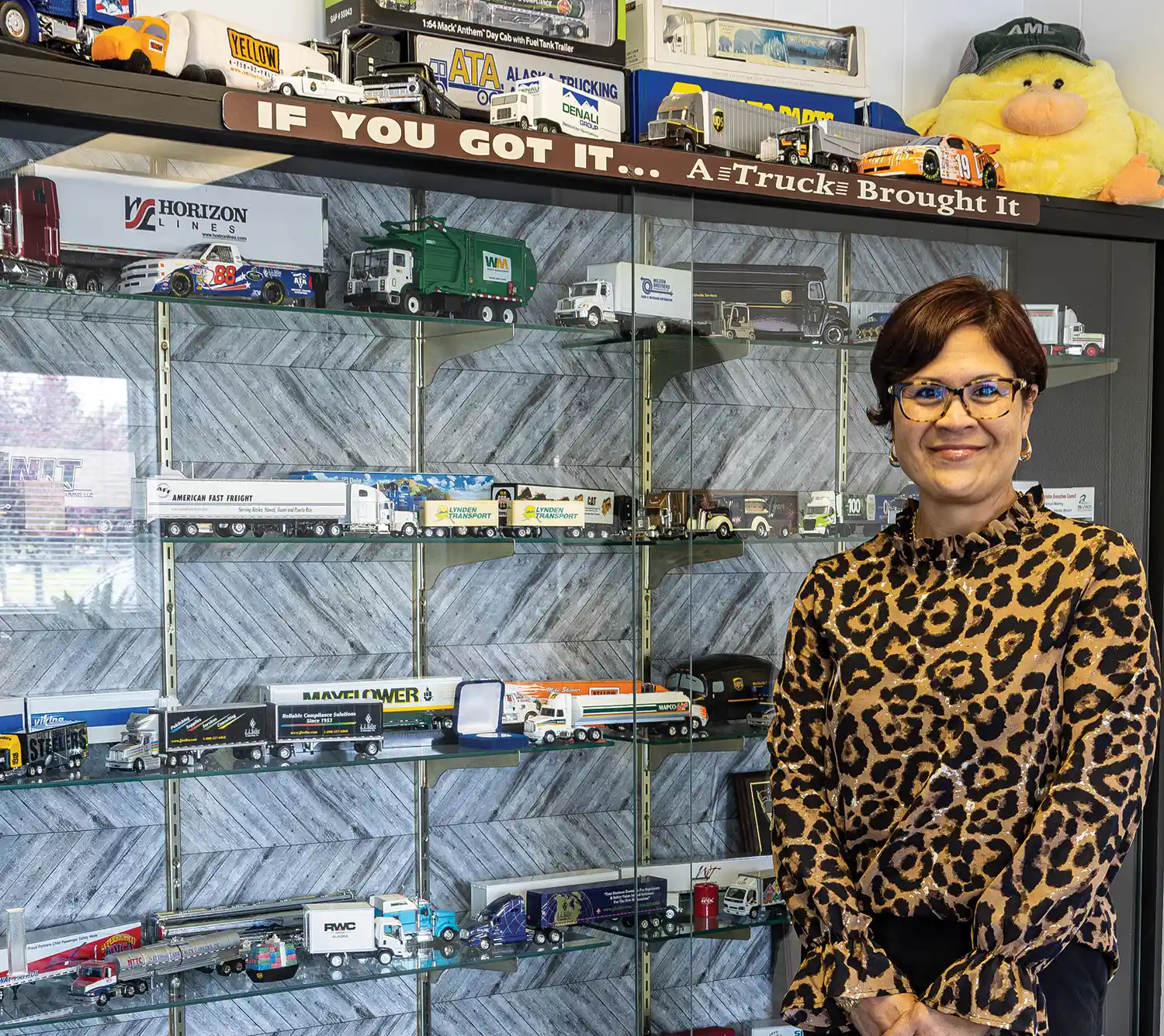
n July, the Alaska Trucking Association (ATA) welcomed Jamie Benson as its new president and CEO. The transportation industry veteran was a natural fit, having climbed the executive ranks of FedEx. She previously served as ATA’s board president in 2019.
Benson says Alaska has always been home—something she credits largely to her father’s adventurous spirit. “He was a native Hawaiian and served in the Navy, but he always wanted to be that Alaska wild man, so that’s how we ended up here,” she says with a laugh.




Northbound 800.426.0074 | Southbound 800.234.8683
his section glimpses the future of AI technology insinuating itself into oil and gas exploration and production. Dig into the companies eyeing nickel and graphite deposits to drive forward the energy transition. Baseball cards serve as an aid for understanding Alaska’s major producing mines, and peek over the border to seek how mining in Canada affects fishery resources in Southeast.
The forests of Southeast, heaving with wood resources, are poised for new development thanks to legislation promoting local lumber grading. Forests are also treasured by cruise ship visitors, which is why tourism counts as a natural resource industry too.
his section glimpses the future of AI technology insinuating itself into oil and gas exploration and production. Dig into the companies eyeing nickel and graphite deposits to drive forward the energy transition. Baseball cards serve as an aid for understanding Alaska’s major producing mines, and peek over the border to seek how mining in Canada affects fishery resources in Southeast.
The forests of Southeast, heaving with wood resources, are poised for new development thanks to legislation promoting local lumber grading. Forests are also treasured by cruise ship visitors, which is why tourism counts as a natural resource industry too.
the New Wave
exploration and development
achines capable of learning are the forerunners of the Fourth Industrial Revolution, as far beyond the vacuum-tube computers that heralded the Third Industrial Revolution as those contraptions were to the telegraph that wired together the Second.
The changes that have already come are revolutionary; the changes on the horizon are even more so, says Helena Wisniewski, UAA professor of entrepreneurship and chair of its management, marketing, logistics, and business analytics department. She’s also the university’s first Marion Porter chair, an endowed chair within the College of Business and Public Policy.
Wisniewski spoke recently at the Alaska Oil and Gas Association Conference on the topic of AI in the oil and gas industry.
he Electric Eighteen” sounds like an electronic music group going viral on TikTok. In reality, it’s what the US Department of Energy calls eighteen minerals deemed critical for energy technology. A mineral is considered “critical” if it is at high risk for supply chain disruption and deemed essential to one or more energy technologies.
Graphite and nickel are part of that group. Each has a variety of commercial and industrial applications. Graphite is a key component in laptop computers, smartphones, drones, energy storage devices, and nuclear reactors, while nickel is used to manufacture stainless steel, turbine blades, and jet engine parts. More recently, demand for the minerals has been driven by their use in the lithium-ion batteries that power electric vehicles; by weight, graphite and nickel are the first- and third-largest mineral components of these batteries.

Fewer still is the number of active mines. There are only six major ones, plus a rookie that just began its brief career. Too few players for a baseball team, but exactly enough for, say, water polo. Most of them are powerhouses in their home turf, the MVPs of their respective regions.
Clip these cards and shuffle them whichever way makes sense. Rank them by annual output or estimated reserves. Order them by rookie year. Sort them by mine type or by number of workers. Get to know the industry that rocks heavy metal every day.
yanide and other waste spilled in June from Victoria Gold Corporation’s Eagle Gold Mine. The mine opened in 2018 near the village of Mayo, about 100 miles east of Dawson City. Although nearly as far away from the international border as Fairbanks is, what happens in Mayo doesn’t stay there. Mayo sits on the Stewart River, a tributary of the Yukon River that flows into Alaska.
Mary Catharine Martin, communications director for Juneau-based environmental group SalmonState, wasn’t exactly surprised that Eagle’s heap leach pad failed.
“The risks were made clear by Canada’s Mount Polley Mine waste dam disaster in 2014. Afterwards, experts estimated that two mine waste dams in British Columbia will fail every ten years, on average,” Martin says.

RepublicServices.com/ES to learn more.
RepublicServices.com/ES to learn more.
- Anchorage
- Fairbanks
- Kenai
- Moose Creek
- Palmer
- Prudhoe Bay
raining and certifying Alaskans to self-grade dimensional lumber opens a new opportunity to provide a product to the local residential construction market.
“The product can be sold to an end-user and used in structural applications in houses and frames that meet residential building code requirements where applicable,” says Matt Labrenz, a forest products specialist for the UAF Cooperative Extension Service (CES).
Currently, there aren’t any Alaska mills comparable in size and scale to the industrial mill operations in the major lumber producing regions of North America. Large mills usually belong to a grading agency that grades and marks lumber produced by these mills and ensures lumber meets quality control standards.
Since the decline of Southeast sawmills in the ‘90s, a couple of smaller Alaska mills provide grade-stamped lumber, but most remaining mills don’t. With training and certification, though, they could.
Delivering Private Infrastructure Investment for Alaska
Integrated Design Builder





ust as mist and fog roll over the coastal mountains, and just as salty waters lap along the sandy shorelines of Southeast, a new wave of opportunity is rippling across the region’s communities. They have taken bold steps in recent years and committed notable investments to embrace the cruise ship industry by developing new docks and infrastructure. This shift marks a significant turning point for these communities, many of which are working to reinvent their economies in the face of declining traditional industries like fishing and timber.
A port call by large cruise ships is more than just an economic boost—it’s a chance to share unique cultures, histories, and ways of life with the world.
“Alaska is a must-see destination for many travelers and has proven to offer the most profitable itineraries for cruise lines,” says Russell Dick, president and CEO of Huna Totem Corporation. “This presents our state with an incredible opportunity to showcase the many cultures and expansive beauty of Alaska. While a few Alaska ports are well-known and expected stops for visitors to our state, we have repeat visitors who want to see new destinations and have deeper, more meaningful experiences.”
slands of Southeast demand a certain self-sufficiency, even for the building designers who live in the region. Unlike in urban settings where architects may specialize in certain areas such as healthcare or education, Southeast professionals work on projects running the gamut from historical renovations and private homes to schools, hospitals, and government buildings.
“In larger regions, firms can specialize in medical buildings or hospitality design, but up here, we’re like a general practice doctor in a small town,” says James Bibb, partner and principal at Juneau-based NorthWind Architects. “One day we may be creating a broad-brush master plan, and the next day we’re designing someone’s garage or the front deck of a house. Either way, we’re problem-solving and servicing a client.”
Come
together



Events | Concerts | Conferences | Conventions | Banquets | Meetings | Trade Shows | Weddings | In-house Catering | Equipment Technology


he City and Borough of Wrangell is offering a unique opportunity for strategic partners and investors: a chance to capitalize on Alaska’s last undeveloped deep-water port. The 42-acre waterfront site provides direct access to maritime routes and accommodates large vessels, making it ideal for supporting diverse development projects. Once fully developed, Wrangell’s port will become a major economic hub that enhances financial stability and independence for the area, says Economic Development Director Kathleen Thomas.
Wrangell is in the preliminary stage of addressing the project’s planning activities, which are being funded by a $421,000 federal grant. The port site is essentially a “blank canvas” in a community with a strong penchant for business and population growth. Since acquiring the land in 2022, the borough has established short-term leases with a metals output operation and is diligently working to entice other businesses to the area. “The impetus for the borough procuring the site was to drive development by relocating the barge and cargo services and help source compatible private investment parties,” Thomas says.
hen Alaska Native Heritage Center (ANHC) reached its silver jubilee this year, it chose to kick off a $25 million capital campaign. Investing a million dollars for each year of its past existence would let ANHC continue to educate visitors about Alaska Native cultures and strengthen community engagements for years to come.
Kelsey Ciugun Wallace, ANHC vice president of strategic advancement and communications, laughs as she recalls a totem pole raising and potlatch last October that attracted more than 1,000 people. “We were quickly reminded about how small our space was,” she says. “So when it came to celebrating our 25th anniversary, we decided to dream big and developed a four-phase capital campaign which is going to refresh our existing facility and expand our campus.”
Anchorage, AK 99507
www.materialflow.com
laskans can be water snobs. While parts of the Lower 48 fight for access to clean and safe drinking water, the Upper 1 boasts nearly 3 million lakes, 12,000 rivers, and 100,000 glaciers—pristine sources that make up nearly 50 percent of the total surface waters in the United States.
But getting water from a glacier or a lake and into homes is another story. In rural Alaska, extreme temperatures and challenging geography complicate the design and construction of water systems. Some remote villages rely on washeterias where residents can access drinking water, filling containers and hauling them to their homes. About twenty-three Alaska villages have no water-access facilities at all.
Preserve Farms
long-awaited Alaska Feed Grain Reserve was established last year to purchase part of the state’s cereal crop and help stabilize food security.
Farmers have been raising grain in the Tanana Valley since the late ‘70s, when the State of Alaska allocated Interior farmland for barley production. “There’s not a lot of issue with being able to grow the barley,” explains Zach Knight, manager of the Alaska Farmers Cooperative in Delta Junction. The short season at 64° north latitude is not an insurmountable obstacle; approximately 5,000 acres of barley under cultivation benefit from clean water, clean soil, and fewer pests than in other climates.
Fairbanks 907.458.9049 · Anchorage 907.341.2250 · esialaska.com
Abert84 | Envato
Three Steps for a Better Business
Long-lasting growth and change

few of my college professors had a profound impact on my beliefs about the impact of business on community. One lesson came from my undergraduate professor of economics, an old Jesuit with a keen eye for numbers and a stoic teaching style. He had us study the Banana Wars, a series of trade and political disputes involving US intervention in Central America in the late 19th and 20th centuries. Our final exam was to write a review of the economic impact of those wars and the influence they still had on our present day—but from three different perspectives: a US corporation’s perspective, a global consumer’s perspective, and the perspective of a farming family in Honduras. That class changed my view about the impact of business forever.
Another lesson came from a graduate marketing course. The instructor argued that the fastest way to change our world was through business. He then shared research about how quickly businesses could produce goods, shift global economics, and positively influence and improve the lives of people—employees, stakeholders, community members, and future generations.
ob is the manager of a customer service department for a software product. The company has just launched an AI feature that has caused a spike in new account sign-ups. The customer service team is busy taking calls for new orders, which has caused them to stop conducting a regular two-month check-in call with customers.
Bob’s boss shows him the latest quarterly report. Although new customers are booming, there has been a dramatic increase in accounts closing after three months. The lack of customer retention has decreased revenue and spooked investors. The boss wants a plan to address the issue.
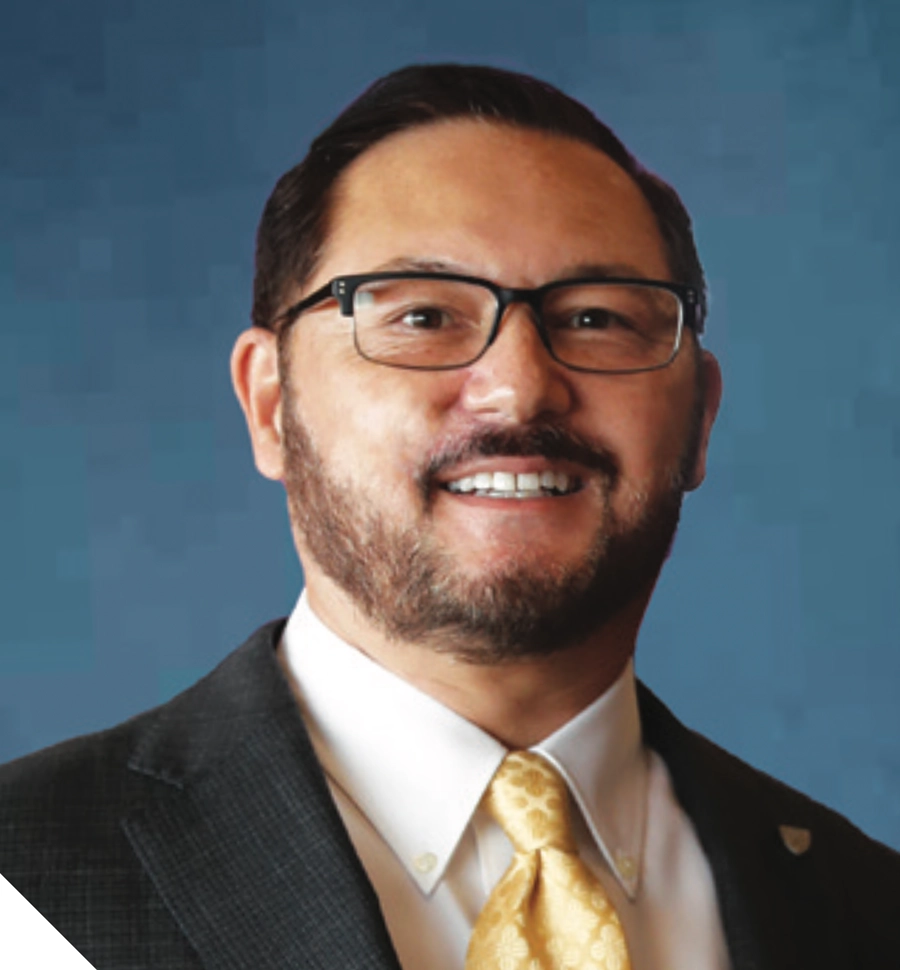
know—the headline isn’t very elegant. It is purposely vague because it was written to capture your attention. To get you to read more. We do publish “stuff,” specifically magazines, but it doesn’t end there. Alaska Business Publishing Co.’s flagship publication is Alaska Business, the magazine you are reading right now. But did you know we also publish The Alaska Contractor, the official quarterly magazine of the Associated General Contractors of Alaska?
We are proud of our partnership with AGC of Alaska and are blessed to work with its incredibly talented and dedicated team led by Executive Director Alicia Amberg. As advocates for the construction industry, their mission perfectly aligns with ours: promoting economic growth in Alaska.
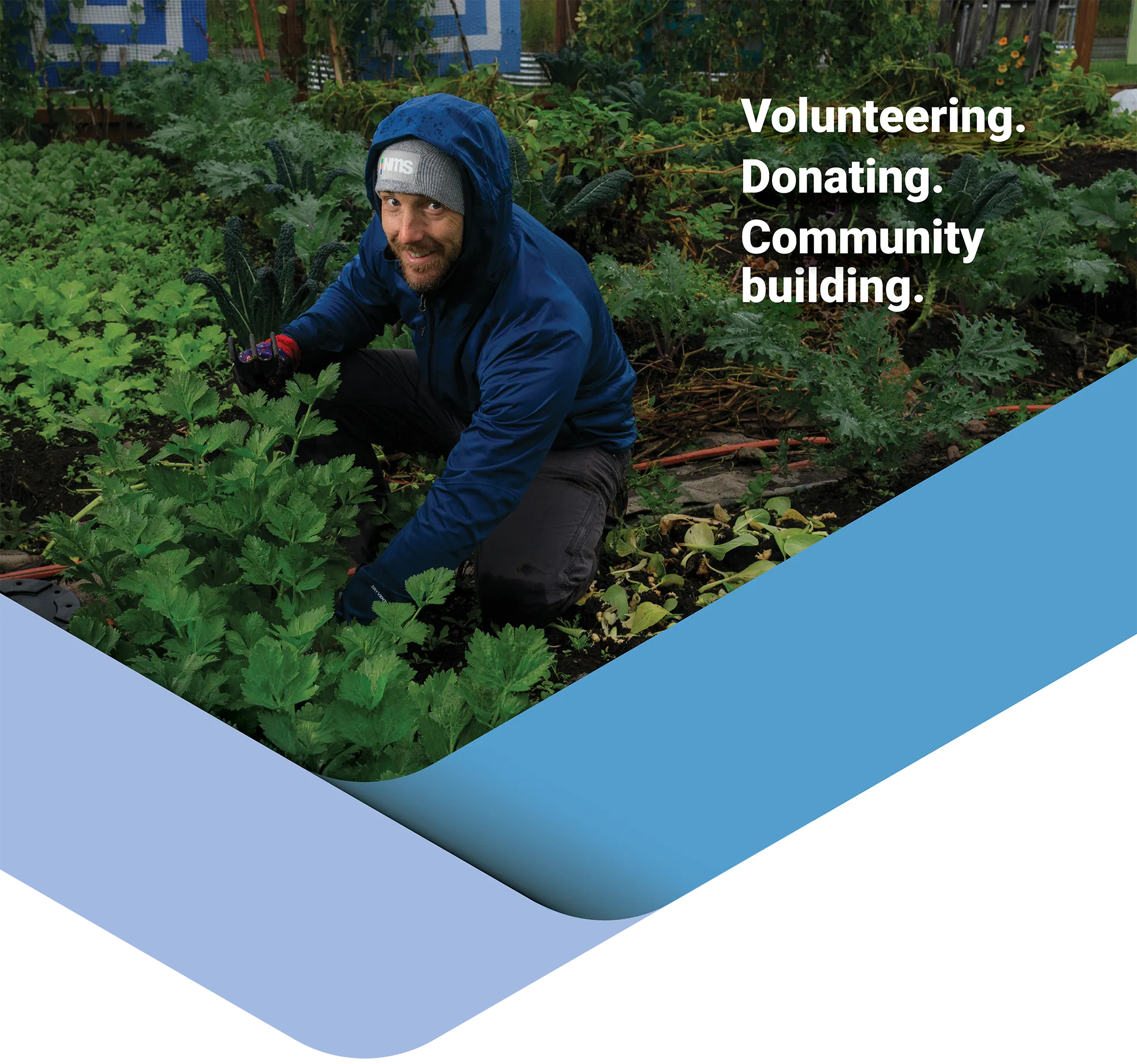

 Denali Universal Services (DUS) added Bernard Chastain to its executive team as a Security Director, collaborating with clients and DUS personnel to meet security needs. Chastain began his career as an Alaska Wildlife Trooper in Soldotna and Glennallen and worked his way up to colonel. As deputy director of Wildlife Troopers from 2015 to 2020, and later of the Alaska State Troopers, Chastain managed recruitment, training, vehicle programs, and budgets.
Denali Universal Services (DUS) added Bernard Chastain to its executive team as a Security Director, collaborating with clients and DUS personnel to meet security needs. Chastain began his career as an Alaska Wildlife Trooper in Soldotna and Glennallen and worked his way up to colonel. As deputy director of Wildlife Troopers from 2015 to 2020, and later of the Alaska State Troopers, Chastain managed recruitment, training, vehicle programs, and budgets.Alaska Trends
ritical Mining for Critical Times” is the theme of the Alaska Miners Association (AMA) annual convention and trade show being held in Anchorage this month. As AMA Executive Director Deantha Skibinski once explained, “critical” means you need the mineral while “strategic” means you don’t have it. In these times, Alaska’s mineral resources are becoming more critical and, as development proceeds, less “strategic.”
Mineral extraction brought Klondikers to the new US territory of Alaska during gold rushes that concluded the 1800s, and the industry continues to power the state in the 21st century. The Northwest Arctic Borough, the Fairbanks North Star Borough, and the City and Borough of Juneau each collect their largest chunk of municipal taxes from major mines. Interestingly, newer projects in advanced exploration—Graphite One, Livengood, and Niblack—and others at various stages, from Nikolai nickel to Donlin gold, are outside of organized boroughs. The economic impact of these projects flows more directly to the nearest communities.
Anything by Malcolm Gladwell. As a business owner, I tend to like things that are studies of human behavior, especially as it pertains to business, like The Tipping Point.
What charity or cause are you passionate about?
Nature and trail building, like the work Alaska Trails does. I also have a big soft spot for anything to do with children’s well-being and getting kids into nature.
What’s your favorite local restaurant?
Fire Island Rustic Bakeshop.
What vacation spot is on your bucket list?
Eastern Canada. I’m from Canada originally, and I’ve traveled west so much and traveled in other countries abroad. I really would love to see the east coast of Canada.
If you could domesticate a wild animal, what animal would it be?
When I was a child, I found a baby mole… so it would either be that or an Arctic ground squirrel.

Anything by Malcolm Gladwell. As a business owner, I tend to like things that are studies of human behavior, especially as it pertains to business, like The Tipping Point.
What charity or cause are you passionate about?
Nature and trail building, like the work Alaska Trails does. I also have a big soft spot for anything to do with children’s well-being and getting kids into nature.
What’s your favorite local restaurant?
Fire Island Rustic Bakeshop.
What vacation spot is on your bucket list?
Eastern Canada. I’m from Canada originally, and I’ve traveled west so much and traveled in other countries abroad. I really would love to see the east coast of Canada.
If you could domesticate a wild animal, what animal would it be?
When I was a child, I found a baby mole… so it would either be that or an Arctic ground squirrel.
Off the Cuff
hreads woven into the fabric of Alpine Fit outdoor apparel stretch back to the wilds of Canada. Roving her homeland taught founder and owner Jen Loofbourrow the importance of having appropriate gear. She studied chemistry and worked as a materials specialist at yoga clothing giant lululemon, and she ran her own business—a Scandinavian underwear franchise—while living in Ireland.
Stitched together, the result is adventure clothing designed to fit a variety of body types and sewn in Midtown Anchorage with silver odor-fighting components.
“You can’t get a comparable thing made somewhere else,” she says.
- 3-Tier Alaska
- Airport Equipment Rentals
- Alasconnect
- Alaska Dreams Inc
- Alaska Pacific University
- Alaska Railroad
- Alaska School Activities Association
- Altman, Rogers & Co.
- Alyeska Tire.
- Anchorage Chrysler Dodge
- Anchorage Convention Centers
- Anchorage Sand & Gravel
- Arctic Slope Telephone Association
- Avis Rent-A-Car
- Bagoy's Florist & Home
- Chugach Alaska Corporation
- City and Borough of Wrangell
- Conam Construction Co
- ConocoPhillips Alaska
- Conrad-Houston Insurance Agency
- Construction Machinery Industrial
- Cook Inlet Tug & Barge Inc
- Craig Taylor Equipment
- Crowley Fuels
- Cruz Companies
- Denali Commercial
- Denali Industrial Supply
- Design Alaska
- Donlin Gold
- Equipment Source, Inc
- Fay Ranches
- First National Bank Alaska
- GCI
- GCI
- JAG Alaska
- JD Steel Co Inc
- JEFFCO Inc
- JENNMAR
- Kinross Alaska
- LifeMed Alaska
- LONG Building Technologies
- Lynden
- Manley Brautigam Bankston P.C
- Material Flow & Conveyor Systems, Inc.
- Matson Inc.
- MICROCOM.
- MT Housing Inc..
- Nana Regional Corporation..
- Nenana Heating Services, Inc
- Nortech Environmental & Engineering
- Northern Air Cargo
- Northrim Bank
- NOVAGOLD
- Oxford Assaying & Refining Inc
- Pacific Seafood Processors Association
- Parker, Smith & Feek
- Petro Marine Services
- PND Engineers Inc.
- Providence Alaska
- Republic Services
- Resource Development Council
- Santos
- SATEC Inc..
- Sheet Metal Inc
- Surveyors Exchange, Co Inc.
- T. Rowe Price
- The Plans Room
- Toast of the Town
- Tongass Federal Credit Union
- TOTE Maritime Alaska LLC
- Turnagain Marine Construction
- Tutka, LLC
- United Way of Anchorage
- University of Alaska Office of Public Affairs
- Usibelli Coal Mine
- Westinghouse Electric Company LLC
- Wrightway Auto Carriers, Inc.
- Yukon Equipment Inc


907.522.6466
907.456.2000
907.895.9898
907.474.2000
907.335.5466
907.659.2000

For more information, call us at 1-888-596-3361 or visit our website at lynden.com.









